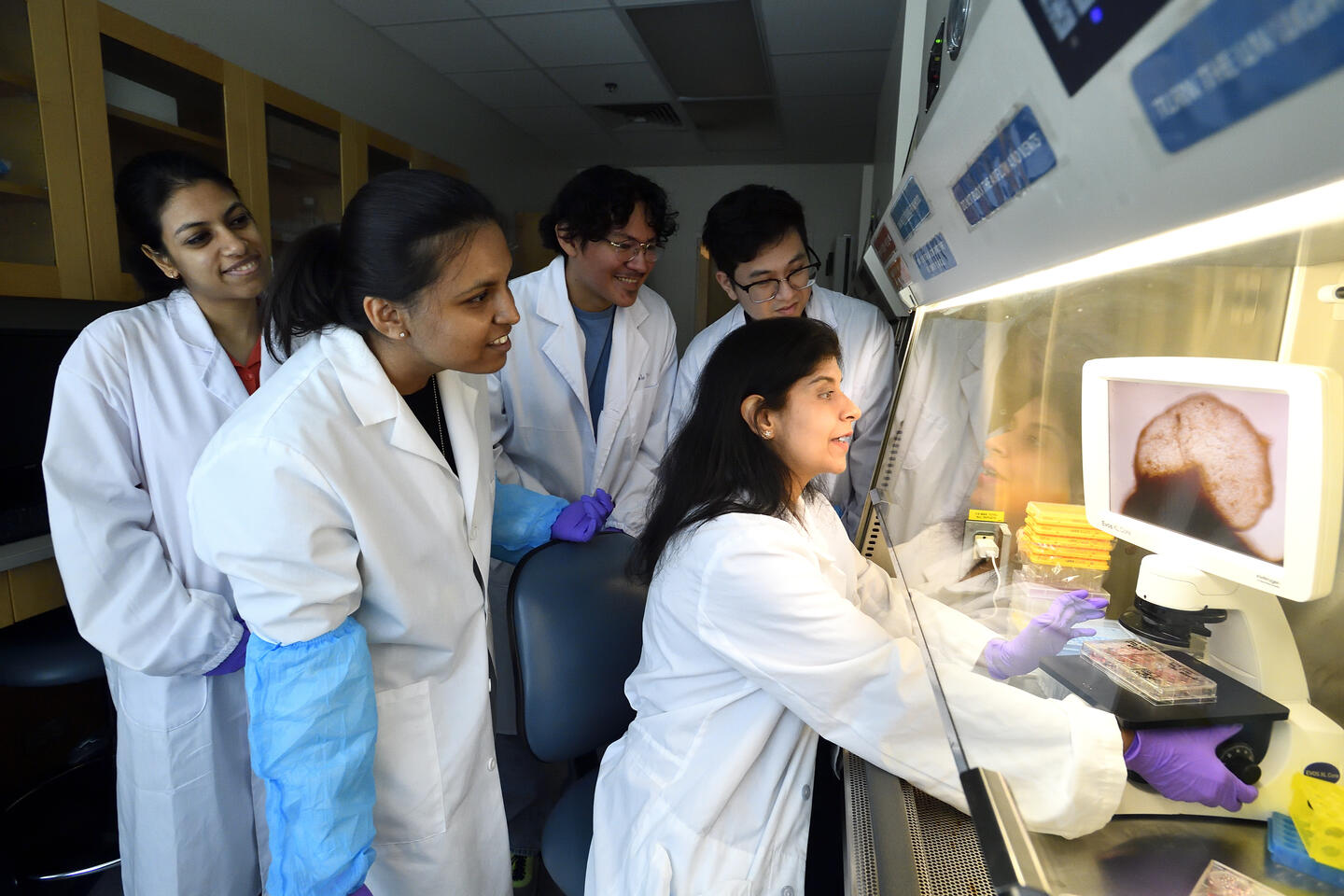In an exciting advance in the world of neuroscience, a team led by researchers at Johns Hopkins University just unveiled some of the first whole-brain organoids – “mini brains” that incorporate tissues from each region of the brain all linked up together.
Organoids are miniature replicas of an organ grown from stem cells in the lab. Brain organoids have already been used to help answer all kinds of research questions, from how drugs affect people differently, to how brain tumors form, to whether hybrid brain bio-computers could be part of our future.
These new organoids are different, though, as senior author Dr Annie Kathuria explained to IFLScience.
“What sets this apart is that most brain organoids are either one region, like the cortex or the hindbrain, or the brain and spinal cord, or the central nervous system. And what we’ve done is taken the cortex, the midbrain, [and] hindbrain, and then we fused something in the middle, which is the endothelial cells of the blood vessels.”
“When we fuse all these three together, we get a whole-brain organoid.”
These types of organoids are much more complex to produce and so have rarely been reported in the past – and in fact, Kathuria’s group weren’t even planning to create them now. In the grandest tradition of science, this all kind of came about by happy accident.
“I’m going to be honest; it was just by luck. Most discoveries happen that way,” she told us. “We were trying for something totally different […] [but] because these are developmental tissues, and we’re trying different timepoints and different chemicals, we accidentally developed something which has the midbrain and the hindbrain.”
That’s what’s different – it’s a whole brain with rudimentary blood supply.
Dr Annie Kathuria
There are different approaches to growing organoids, but in this case, Kathuria likened it to building a machine: “we did it like an engineering problem, developed different parts and put them all together”.
They grew cells from each region of the brain, as well as precursor cells for the formation of blood vessels, in separate dishes before combining them using proteins that a statement about the work describes as a type of “biological superglue”. As the tissues continued to grow, they formed connections and even began to show evidence of electrical activity, and the formation of a rudimentary blood-brain barrier (BBB).

Kathuria and the team in their lab.
Image credit: Will Kirk / Johns Hopkins University
“We get a 40-day fetal brain match at 80 percent,” Kathuria said. “Let’s say there’s a ratio of astrocytes, neurons, and other cell types in the fetal brain, and we get the same types, and it’s an 80 percent match. So that’s what’s different – it’s a whole brain with rudimentary blood supply.”
So, once you have an all-singing, all-dancing organoid, what can you do with it?
Don’t ask if they’re conscious, please.
Dr Annie Kathuria
“The lowest hanging fruit, I would say, is drug discovery for neurological disorders, and particularly neurodevelopmental disorders,” said Kathuria. Her lab is particularly interested in studying the genetic basis of autism, as well as the potential role of disrupted vascularization and BBB formation in schizophrenia. The failure rate of new drug candidates entering clinical trials is extremely high – close to 96 percent for neuropsychiatric drugs – and brain organoids provide a great, humanlike model for testing with the added benefit of helping the drive away from animal experimentation.
And further in the future? “My vision would be to do personalized medicine,” Kathuria added.
The possibilities are really exciting. But there’s one point that Kathuria is keen to emphasize as our conversation comes to an end.
“Don’t ask if they’re conscious, please,” she implores. “Think of it this way. This is a miniaturized version of your brain. Your brain has 86 million neurons […] It’s a very good match to the fetal brain, but it isn’t conscious.”
A “mini-brain”; a whole-brain organoid; a fantastic model for the human brain? Sure. But an actual brain it ain’t!
“I always make this joke in lectures that it’s like iPhone version one. Now, we’ll get to iPhone 16 someday, with dynamic flow. That’s the next step – we have these rudimentary blood vessels, and we want flow to happen with them,” Kathuria explained. That research is already underway, and we’ll certainly be watching this space to see how it pans out.
The study is published in the journal Advanced Science.
Source Link: New Human “Mini-Brains” Combine Cells From The Whole Brain – Even The Blood Vessels